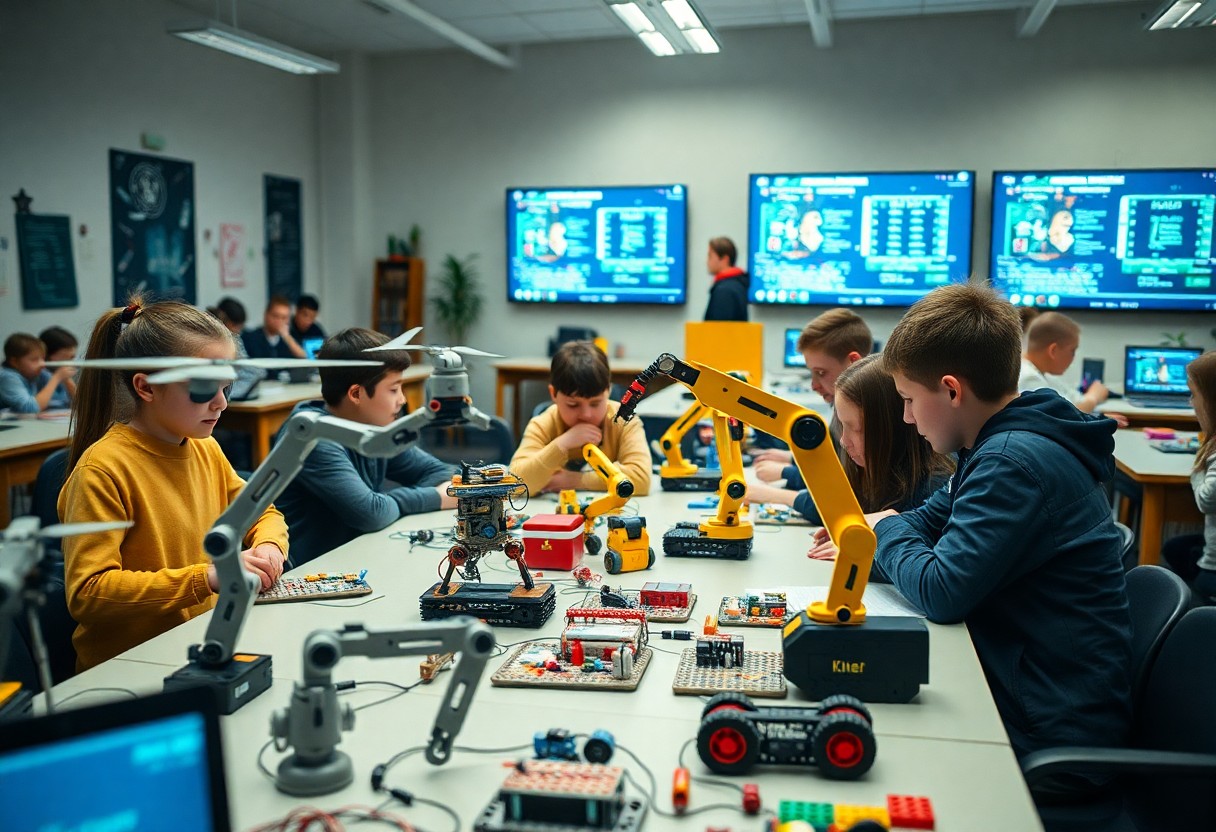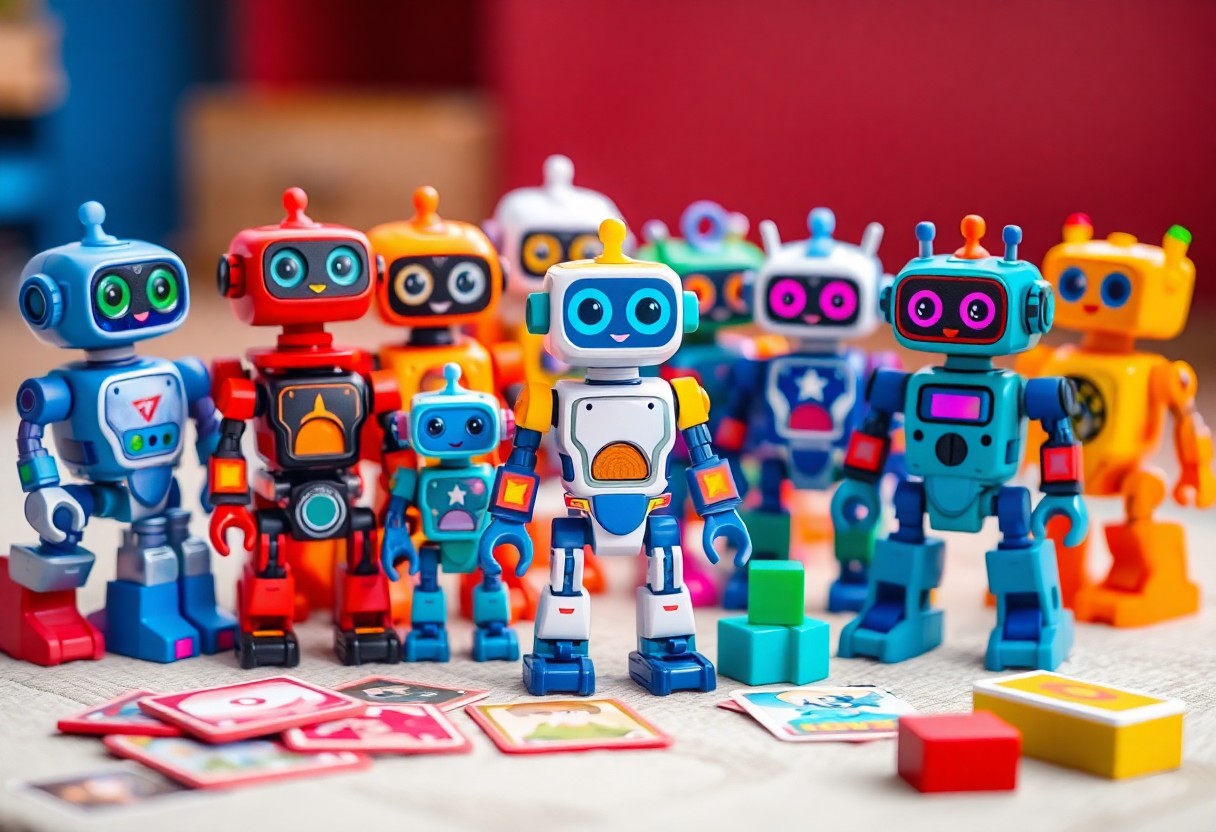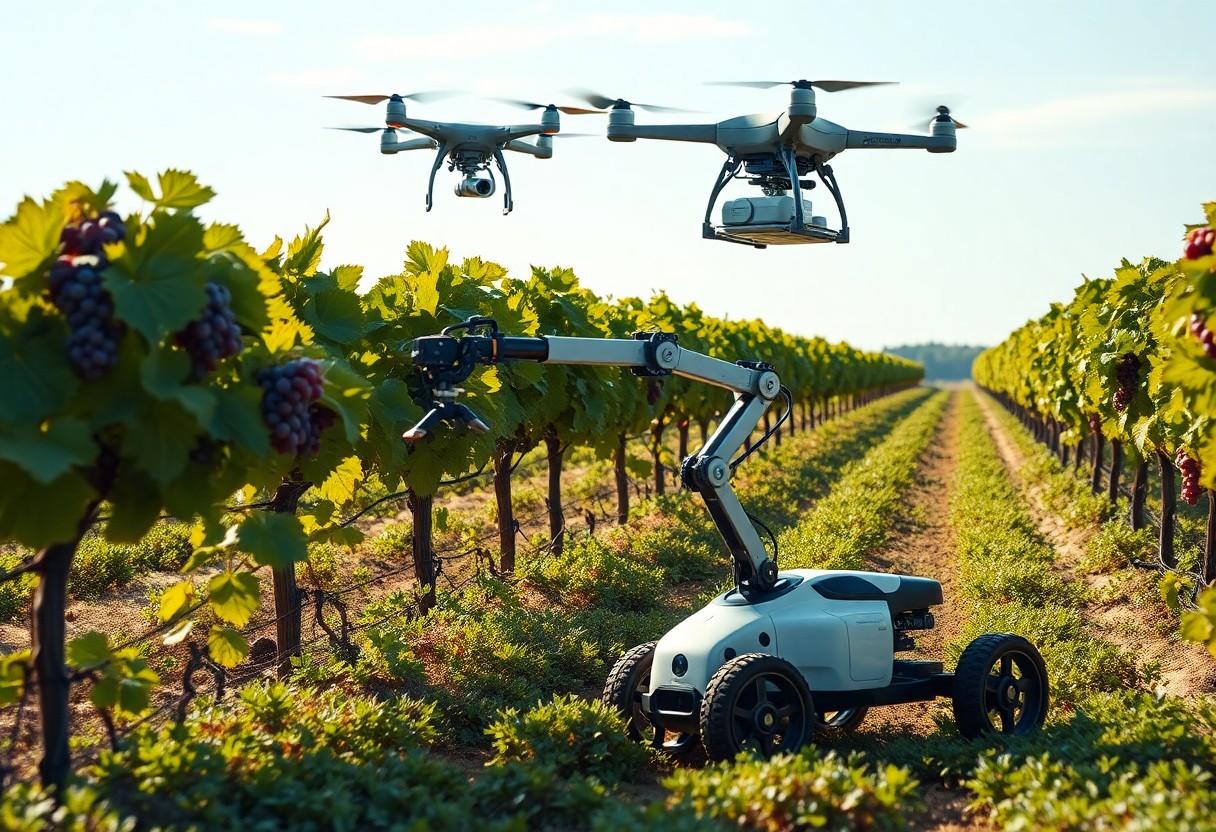Most industries beyond manufacturing are rapidly adopting robotics to enhance efficiency and streamline operations. As you explore this transformative technology, you’ll discover its impact on sectors like healthcare, agriculture, logistics, and even entertainment. Robotics is not just about assembly lines anymore; it encompasses advanced applications such as surgical robots, autonomous drones, and robotic process automation. By understanding these emerging markets and applications, you can better navigate the evolving landscape and position yourself advantageously in a world increasingly driven by automation.
The Evolution of Robotics
Historical Overview
Your understanding of robotics must include its rich history, marked by foundational inventions such as George Devol’s Unimate, the first industrial robot, introduced in 1961. This early innovation paved the way for integration in manufacturing, but roots trace back even further to ancient automata and mechanical devices. Over the decades, innovations transformed robotics from simple machines to complex systems capable of sophisticated tasks across various sectors.
Technological Advancements
Advancements in AI, machine learning, and sensor technology have fundamentally changed robotics. Modern robots now possess enhanced perception and cognitive abilities, enabling them to adapt to different environments and learn from interactions. Innovations such as collaborative robots, or cobots, allow for safer human-robot collaboration, increasingly evident in healthcare and logistics.
The fusion of AI with robotics has sparked a revolution, pushing capabilities beyond strictly defined tasks. For instance, robots now leverage real-time data and machine learning algorithms, allowing them to make autonomous decisions. The introduction of vision systems enables robots to navigate complex environments, exemplifying their evolving role in sectors like agriculture, where drones assess crop health, and in hospitality, where robots deliver services seamlessly. This symbiotic relationship between robotics and cutting-edge technology furthers your understanding of how emerging applications are redefining industries.
Robotics in Healthcare
As healthcare continually evolves, robotics is playing an increasingly vital role in enhancing patient outcomes and operational efficiency. From surgical precision to daily assistance, innovations are transforming patient care. Explore more on Robotic Trends in 2025: Innovations Transforming Industries to see how these advancements are shaping the future.
Surgical Robots
Surgical robots are revolutionizing the operating room, providing surgeons with enhanced precision and control. With systems like the Da Vinci Surgical System, minimally invasive procedures have become commonplace, leading to faster recovery times and reduced hospital stays. These robots allow you to undergo complex surgeries with less trauma than traditional techniques.
Patient Care Assistants
Patient care assistants are increasingly utilized to support healthcare providers in various settings. Robots like PARO, the therapeutic seal, help improve mental well-being, particularly in elderly care by providing companionship and stimulation. Additionally, robotic exoskeletons are aiding rehabilitation, allowing you to regain mobility and independence after injury or stroke.
With the growing demand for personalized care, patient care assistants are being tailored to meet specific needs. For instance, robots equipped with AI can gather important health metrics and alert caregivers to changes in your condition, ensuring timely interventions. This harmonious blend of technology and human interaction enhances the quality of care that you receive, allowing healthcare professionals to focus on higher-level tasks while robots manage routine aspects of patient assistance.
Robotics in Agriculture
Robotics in agriculture is transforming traditional farming methods, allowing for increased efficiency and yield. With advancements in technology, farms of all sizes can now utilize robotic systems that automate tasks ranging from planting to harvesting, significantly reducing labor costs while enhancing productivity and precision.
Automated Farm Equipment
Automated farm equipment, such as autonomous tractors and robotic harvesters, streamlines various farming operations. These machines perform tasks like tilling, seeding, and crop harvesting with remarkable accuracy, using GPS and machine learning algorithms to adapt to different field conditions, ultimately maximizing crop output and minimizing resource waste.
Precision Agriculture Technologies
Precision agriculture technologies leverage data-driven insights to optimize farming practices. By using sensors, drones, and satellite imagery, you can monitor soil health, crop conditions, and weather patterns, enabling more informed decision-making. This results in targeted resource application, reducing waste, and enhancing overall farm sustainability.
Employing precision agriculture technologies can lead to a significant increase in crop yields and reduction in input costs. For example, a study from the American Society of Agronomy found that farmers using these technologies can see yield increases of 10-20%. By analyzing specific areas of your fields, you can apply water, fertilizer, and pesticides only where needed, reducing environmental impact while maximizing productivity. This data-driven approach empowers you to make timely interventions that can lead to healthier crops and, ultimately, a more profitable farming operation.
Robotics in Service Industries
You can find robotics making significant inroads within service industries, optimizing operations and enhancing customer experiences. Encompassing areas like hospitality and retail, these applications can reduce labor costs and streamline workflows, leading to improved service quality and efficiency.
Hospitality Applications
In hospitality, robots are transforming the guest experience by providing services like room delivery, concierge assistance, and even cleaning. For instance, hotels such as the Henn-na Hotel in Japan utilize robots for check-in and room service, allowing staff to focus on guest interaction and personalized service.
Retail and Customer Interaction
Retail environments have increasingly adopted robots to enhance customer engagement and operational efficiency. From autonomous shelf scanners to interactive kiosk systems, these technologies help streamline tasks and provide customers with real-time information.
For example, companies like Lowe’s have implemented intelligent robots that assist shoppers by guiding them to product locations and answering questions. This hands-free, interactive experience not only elevates customer satisfaction but also allows staff to concentrate on more complex inquiries. Additionally, robots can analyze foot traffic and product placement for better inventory management, leading to smarter decision-making in retail spaces. With studies indicating that 67% of customers prefer interacting with automated technologies for simple inquiries, integrating robotics into retail is no longer just an innovation-it’s becoming a standard expectation from consumers.

Robotics in Education
Your engagement with robotics in education opens new pathways for interactive learning, fostering innovation and creativity. Schools and universities increasingly integrate robotic tools and platforms to enhance experiential learning, making complex concepts more tangible. Robotics clubs and competitions encourage students to apply theoretical knowledge in practical scenarios, promoting teamwork and problem-solving skills.
Robotics in the Classroom
Incorporating robotics in the classroom revolutionizes traditional teaching methods. You can observe how hands-on projects utilizing coding and robotics kits, like LEGO Mindstorms or VEX Robotics, facilitate a deeper understanding of STEM subjects. Such experiential learning not only makes the curriculum more engaging but also prepares students for future careers in technology.
Skills Development and Training
Emphasizing skills development through robotics prepares students for real-world challenges. Engaging with robotics equips you with coding, engineering, and critical thinking skills. Programs often include workshops and extracurricular activities, fostering a collaborative environment where you can explore, innovate, and solve problems.
Training programs in robotics focus on enhancing both technical and soft skills crucial for the 21st century workforce. For instance, students participating in robotics competitions refine their programming and engineering principles while honing communication and collaboration abilities. Research indicates that students who engage in formal robotics education show improved academic performance and problem-solving aptitude, confirming the value of integrating robotic technologies into learning environments.
Challenges and Considerations
You may face several challenges when venturing into robotics beyond manufacturing, including technical limitations, high implementation costs, and workforce displacement concerns. Balancing innovation with practicality is crucial for successful integration. Addressing these hurdles necessitates a robust strategy that aligns with your organization’s goals while considering long-term sustainability, adaptability, and public perception.
Ethical Implications
Your exploration of robotics must critically examine the ethical implications, particularly regarding autonomy and decision-making. As robots become more integrated into daily life, questions surrounding accountability and moral responsibility arise. The risk of reinforcing biases or failing to respect privacy also needs careful consideration, especially in sensitive areas like healthcare or law enforcement.
Regulatory Issues
Navigating the regulatory landscape is another critical aspect when implementing robotics. Compliance with industry standards varies globally, affecting how you deploy technology. The lack of unified regulations can lead to legal ambiguities, complicating efforts to adopt innovative solutions seamlessly.
Regulatory bodies are continuously updating their frameworks to address the rapid evolution of robotics, yet inconsistencies often exist across regions. For instance, in the European Union, the General Data Protection Regulation (GDPR) impacts how robotic systems handle personal data, whereas in the U.S., guidelines are more fragmented. Engaging with local authorities and industry associations can provide you clarity and support, ensuring compliance while fostering innovation. Adapting to these evolving standards is vital for legitimate and responsible growth in robotics applications across sectors.
Conclusion
Considering all points, you can see that robotics is rapidly expanding beyond traditional manufacturing sectors. By exploring new markets and applications, such as healthcare, agriculture, and logistics, you can leverage advanced robotic technologies to improve efficiency and enhance quality of life. Embracing these innovations will not only keep you competitive but also open up opportunities for growth and collaboration within emerging fields. The future of robotics holds immense promise, and you are well-positioned to capitalize on these advancements.







